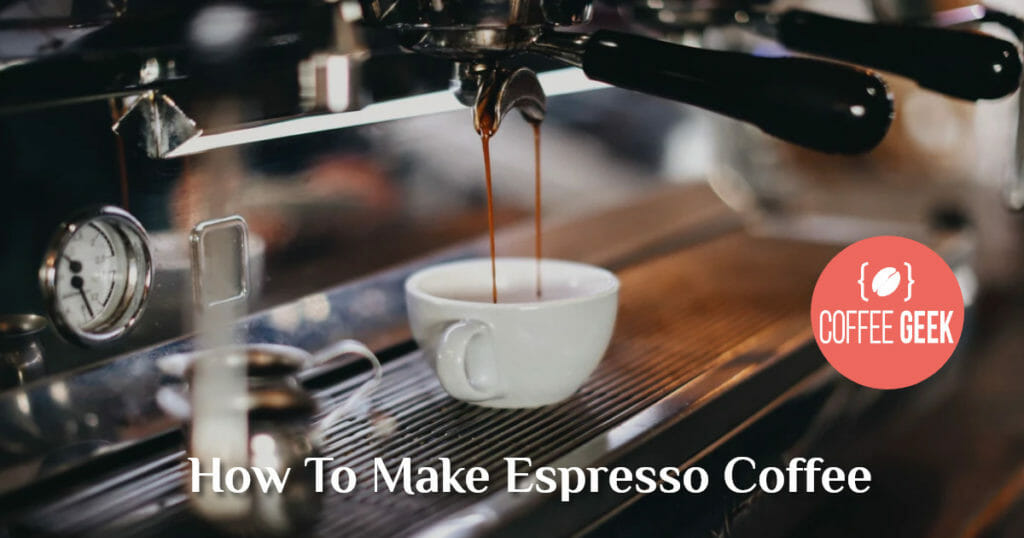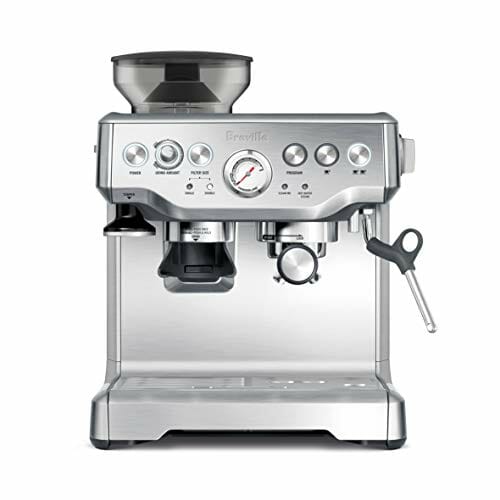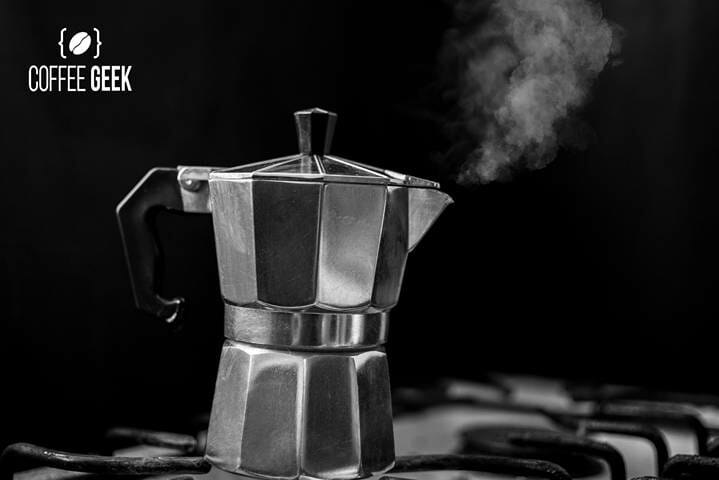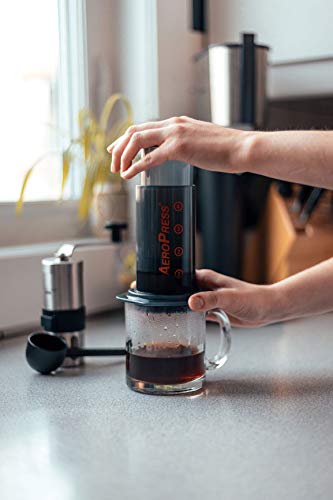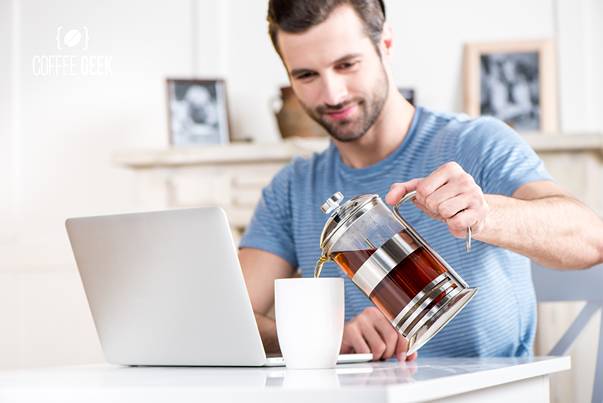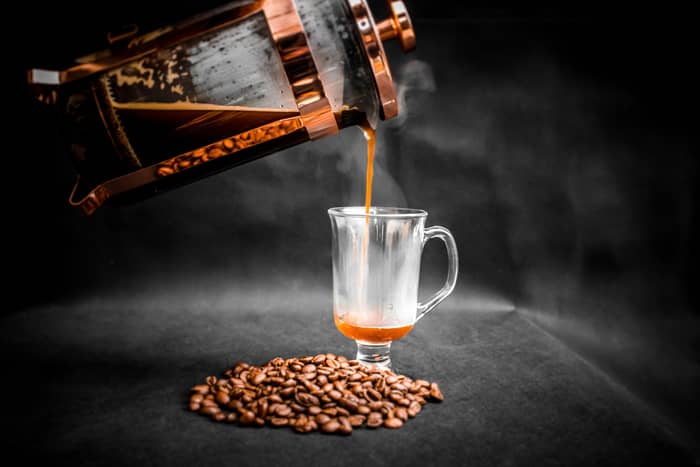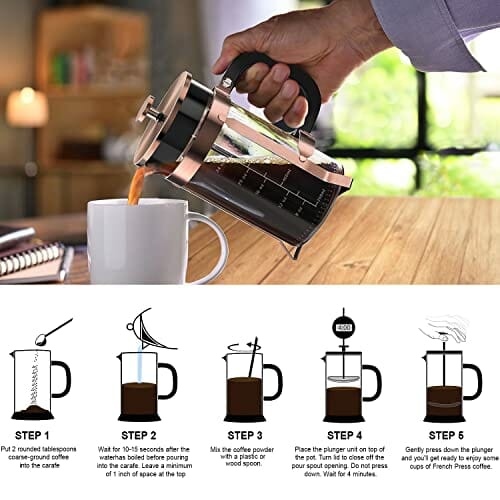Espresso is many coffee lovers’ go-to drink for a caffeine fix in the morning and during the day.
A cup of espresso is plain and simple, yet is also the foundation of many espresso-based coffee beverages.
But pulling a shot of Joe isn’t always the easiest.
In this article, as your fellow coffee lover, I’m going to show you:
- How to make espresso coffee at home using an espresso machine, the classic and professional way just like the coffee shops
- Other brewing methods to brew espresso without a machine, the compromising ways
From choosing the espresso beans to serving, I’ve got your back with helpful details.
How To Choose CoffeeBeans For Espresso

Can you brew quality espresso out of regular coffee? Generally, you can use any type of coffee beans for espresso.
However, you must have seen some coffee packages with the phrase “espresso roast” and “espresso-style” slapped on them while doing coffee shopping.
The thing is, though you don’t necessarily have to get a specific bag of espresso beans that is different from the one you’re already using for your drip coffee machine, certain elements work better with the flavor of espresso than others.
And since I’m here to tell you how to make espresso the best way, I’ll show you what to keep in mind when choosing the espresso beans.
Blend
For espresso, a blend of both Arabica and Robusta is considered to be the traditional take, in which the former accounts for the majority.
Arabica coffee beans, which are sweeter and lighter with fruity notes, balance well with the bolder and more bitter taste of Robusta.

The result is an intricate flavor blend that is full-bodied, strong, and pairs well with milk to create milky espresso-based drinks.
Roast
It’s recommended to use a darker roast for espresso which means lower acidity and more oils emitted enveloping the beans.
Check the roast date to make sure they are still fresh and high-quality. The fresher they are, the better the espresso flavor becomes.
Grind
Finely ground coffee (table salt size) ensures that the coffee-to-water contact time is optimized for extraction.
So even if you use the same whole beans as regular coffee, have them ground the right way for your espresso. Check out how the grind size should look here.

Similar to the roast, you should have the coffee ground as recent as possible. For the freshest brew, invest in a burr grinder so you can have the beans ground whenever you make espresso at home.
Looking for recommendations? Read my latest reviews to find the best burr grinder here.
If you want to learn more about how espresso is different from regular coffee, check my previous article here.
How To Make Espresso With An Espresso Machine
What You Need
- An espresso machine and its equipment
- Coffee beans
- Water
- A serving ceramic or glass cup
- Milk (Optional)
Instructions
I’ll be demonstrating the process in 6 steps with the Breville Barista Express semi-automatic espresso machine, which comes with an integrated coffee grinder.
Step 1: Preparation
- Fill the reservoir tank with tap water. Make sure to replace it with fresh water each day.
- Fill the hopper with dark-roast beans.
Step 2: Preheat
- Press the Power button to turn the espresso maker on and let it warm up.
- Fill the serving cup with some instant hot water. Leave it for around a minute to preheat, discard the water, and place the cup on the warming tray.
Step 3: Grinding
- Dial the Grind Size setting to No. 5 per Breville’s suggestion. Use coarser grounds for a double basket.
- Insert the coffee filter basket into the portafilter. Generally, use a single one for a single shot of espresso and a double for a double shot. But the latter is easier to pull off than the former.
- Pick the filter size, single or double, using the automatic dosing. You can also manually adjust the dose.
- Place the portafilter into the grinding cradle to grind your coffee.

Step 4: Tamping
- Lightly tap the portafilter on the counter to level the grounds.
- Use your finger to wipe down the excessive grounds.
- Firmly tamp down the ground bed using a tamper to make it flat.
Step 5: Brewing
- Insert the portafilter into the group head.
- Place the preheated cup below.
- Press the 1 cup / 2 cup button to start the extraction.
- If you want to stop mid-way, press the button again when you want the extraction to cease.

Step 6: Steaming milk (optional)
- If you want to make espresso-based drinks such as a latte, brew 2 shots of espresso.
- Fill the pitcher just below the point the spout starts (around half the pitcher).
- Position the steam wand to hover over the drip tray and dial to Steam to let steam start flowing.
- Turn the steam dial back to Standby again. Quickly position the milk pitcher below the wand so that only the steam tip submerges in the milk. The spout should face your right hand and the steam tip is near the pitcher’s left wall.
- Turn the dial back to Steam to start. Listen to the “screaming” sound as the microfoam is formed. And look for the whirlpool effect on the milk surface.
- Once the milk starts spinning, slowly lower the pitcher to bring the steam tip to the surface or slightly below the surface. This creates microfoams.
- Once the pitcher is hot to touch, dial back to Standby and remove the pitcher.
- Gently swirl the pitcher around and lightly tap it on the counter to settle the bubbles.
- Slowly pour and swirl half of the textured milk on top of your espresso glass to bring the espresso crema on top. For the other half, have a shot at latte art!
Tips
- Note the speed of the extraction. The ideal length of time to pull a shot is around 30 seconds. The espresso pressure gauge is also a good indicator of how your extraction went.
- If the water flows through too fast or the pressure gauge needle is positioned in the lower zone during extraction, your espresso is watery and under-extracted.
- If the espresso takes too long to finish dripping or the pressure gauge needle is in the upper zone, your espresso is likely too bitter and over-extracted.
- Adjust the grind size and grind amount to make changes to your brew.
- Under-extraction: Try to use a finer grind, more amount of coffee, and/or tamp more firmly.
- Over-extraction: Try to use a coarser grind, and/or less coffee in the filter basket.
- Brewing espresso is a learning curve. Knowing how to use the equipment is the first step.
How To Make Espresso Without An Espresso Machine
If you don’t have an espresso maker, worry not! Let me show you 3 other methods to pull a shot of espresso at home.
Moka Pot/Stovetop Method
A Moka Pot is a popular coffee-making device employing the stovetop coffee brewing method. Many households still have one at home to brew coffee, especially in Europe and Latin America.
This Italian device also uses pressure to make coffee like an espresso machine. It helps prompt the extraction time and produce a deeper cup of Joe.
Though the generated steam pressure can’t be on par with modern espresso machines, the rich, strong, full-bodied, and aromatic flavor is probably the closest you can get to a shot of espresso without an espresso machine.
So, how exactly does the Moka Pot work? Steam pressure pushes the hot water from the bottom chamber upward through the second-story basket filled with ground beans.
And what enters into the chamber on top is the extracted coffee.
What You Need
- A Moka Pot
- Finely ground dark-roast coffee
- Water
- A spoon
- A mug
Instructions
Step 1: Disassemble the Moka Pot and fill the bottom chamber with water to the mark.
Step 2: Fill the second-story basket with coffee grounds. Tamp with the spoon so that the ground bed is leveled with the basket’s brim. Then securely put the components back together.
Step 3: Put the Moka Pot onto a stovetop and heat it at medium-low.
Step 4: Once you hear the gurgling sound, the Moka Pot has almost finished the process of pushing coffee into the top chamber. Remove the coffee maker from heat once you see coffee foams forming. Let it sit for 3 minutes, then enjoy.
Want to get to know Moka Pot better than these steps? Click here.
AeroPress
An Aeropress is a manual single-serve coffee maker that’s simple, fast, portable, and low-cost.
If you’re looking into getting a straightforward coffee brewing device that can help you get a quick caffeine fix for your home, AeroPress is a very high-potential candidate.
The AeroPress has the looks of a syringe and works like a syringe.
All you have to do is pressing the plunger down to make espresso-style coffee.
This brewing method also uses pressure which is generated during the plunging action to extract coffee.
Though it’s not an espresso maker, AeroPress does its job quite well to give you a close enough version of espresso.
What You Need
- An AeroPress set: the AeroPress, paper filters, a stirrer, a scoop, and a funnel
- Finely ground dark roast coffee
- Water
- A kettle
- A sturdy cup with the brim wide enough to fit the AeroPress’s cap
- A water thermometer (optional)
Instructions
Step 1: Fill the kettle with water and heat it to 175 degrees Fahrenheit (79.4 degrees Celsius). Use a thermometer to gauge the water temperature. You can also bring water to a boil and leave it for a bit to cool down.
Step 2: Place a paper filter into the drain cap and twist the drain cap onto the chamber of the AeroPress.
Step 3: Place the whole AeroPress assemble on the cup (except the plunger).

Step 4: Use the scoop to get one rounded scoop (3 tablespoons) of fine coffee grounds. Add it to the chamber. Shake the chamber to level the ground bed.
Step 5: Pour hot water over the grounds to reach Level 1.
Step 6: Stir the mixture for 10 seconds with the stirrer.
Step 7: Insert the plunger into the chamber and press it down slowly to push out all of the espresso coffee. Pause a bit when there’s resistance. Plunging should take approximately 30 – 40 seconds.
Tips
- If you use a lighter roast, use hot water at 185 degrees Fahrenheit (85 degrees Celsius).
- Little dripping is normal. But, if an excessive amount of water drips through the filter cap when you pour water over the coffee ground bed, use a finer grind.
- If it’s way too hard to press even after you’ve paused for a few seconds, consider using a coarser grind.
Want to learn more about AeroPress? Read more here.
French Press
A French Press, cafetiére, or press pot, refers to another manual coffee maker that works similar to our previous nominee.
Basically, once the coffee finishes steeping in hot water, the barista holds the knob of the plunger and presses it down.
A filter attached at the end of the plunger rod effectively pushes the coffee sludge down and keeps it there, leaving the coffee on top ready to be served.
The thing is, although French Press coffee is rich, strong, and full-bodied, its flavors are completely different from the espresso taste. How come?
First of all, French Press coffee calls for a medium-coarse grind size rather than espresso’s signature fine grounds.
The filter screen on the French Press can’t filter fine particles very well.
Therefore, to prevent unwanted coffee grounds from slipping into the final brew, a coarser grind has to be used.
Secondly, coffee is mainly extracted while being steeped in hot water for a few minutes in a French Press, whereas espresso shots are pulled under high pressure in only around 30 seconds.
The longer coffee-to-water contact time in the former produces a thicker and bolder coffee taste, while the latter is smoother and carries coffee beans’ essential bitterness and sweetness.
To conclude, this should be the last resort if you don’t have any other coffee makers to work with.
So, how to make espresso with a classic French Press?
What You Need
- A French Press
- Medium-coarse medium to dark-roast ground coffee
- Water
- A kettle
- A spoon
- A mug
- A measuring cup
- A scale
- A timer
- A container
- Water thermometer (optional)
Instructions
Step 1: Fill the kettle with 15 oz (443.6 ml) of water and heat it to 195 – 205 degrees Fahrenheit (90.6 – 96.1 degrees Celsius). Use the water thermometer to help you check. Or else, bring water to a boil and leave it for 30 seconds to cool down.
Step 2: Prepare 20 grams of coffee grounds (4 tablespoons).
Step 3: Pour 5 oz of hot water into the beaker, swirl it around, and discard to preheat the French Press.
Step 4: Add ground coffee to the beaker. Pour enough hot water to soak the ground bed. Use a spoon to stir, put the lid on, and let it bloom for 30 seconds.
Step 5: Remove the lid, add the rest of the water, and stir using the spoon. Put the lid back on again and let it steep for 3 minutes and 30 seconds this time.
Step 6: Hold the knob and slowly press down the plunger. “Espresso” coffee to be served is now left on top.
Tips
- If it’s way too smooth when you push the plunger down, use a finer grind and vice versa.
- French Press makes a lot more than just one serving of coffee as a typical espresso shot, decant the coffee into a separate container if you can’t serve it all right away to avoid over-extraction over time.
Learn more about how to master the arts of plunging here.
Conclusion
I hope you now know how to make espresso using one of the coffee-making devices I’ve suggested above: the classic espresso machine, the simple Moka Pot, the straightforward AeroPress, and the compromising French Press.
And now that you can be your own barista to make espresso without a machine, there’s no need to go to a coffee shop to get a cup of overpriced espresso every time you want a caffeine fix. Where there’s a will, there are ways.

